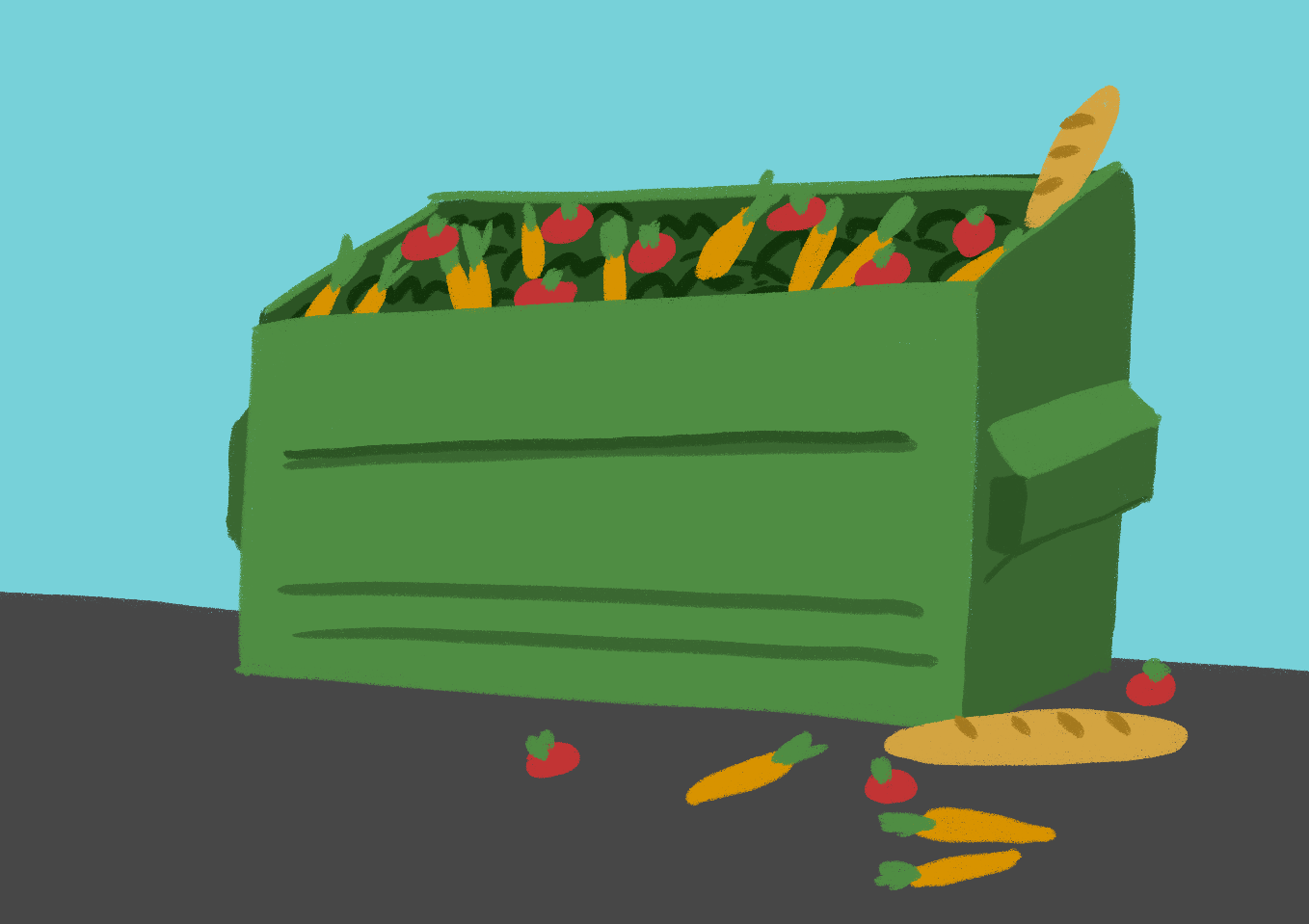A discussion about the food industry through the dos and the don’ts of dumpster diving
When faced with the idea of diving into a dumpster to collect dinner, some may think ew. In our society, garbage is thought of as filthy. So, naturally, a stigma surrounds the dumpster diving practice. But think again.
On March 10, Concordia students Isabella Donati-Simmons and Aven Fisher organized a workshop to talk about the art of ‘diving.’
The workshop, coordinated by Les Échelles, a collective with a focus on a sharing lifestyle, explored the dos and don’ts of the practice, as well as the larger problem of food waste in Canada. The event gathered about 30 people, half of them already experienced divers.
“We are not experts. We are just avid dumpster divers,” Fisher said to start off the workshop.
The participants and organizers discussed major problems surrounding food waste in Canada and around the world. From consumer standards of food aesthetics to transportation and transnational agreements, to the lack of personal connection with food, participants discussed some of the reasons they felt food waste is such a big problem. “The food system is an extremely complex web. It is not just a straight line,” Fisher said.
In Canada, $31 billion worth of food is wasted each year, according to a 2014 report from Value Chain Management International, a global company aiming to improve the efficiency of food chains. This marks a 15 per cent increase from 2010. The same study shows that 47 per cent of this waste comes from individuals in their homes. “It makes you wonder why some are still starving or food insecure, especially the First Nations peoples,” Donati-Simmons said.
Fisher and Donati-Simmons went through “the dumpster rules.” According to the organizers, divers shouldn’t necessarily look at the best-before dates on unopened products and packages. They say it is more important to rely on smell and look instead.
Some products contaminated by mold are still edible. The U.S Department of Agriculture established a list of food which can still be eaten if moldy. This includes hard cheese, firm vegetables, and salami. Donati-Simmons recommends cutting about an inch around and under the mold.
Dumpster divers should equip themselves with a light, preferably a head lamp, gloves and reusable bags. The best places to dive are around small grocery stores or bakeries. The organizers also recommended paying attention to garbage day schedules and store owners’ garbage habits. Fisher also pointed out that it is important not to take more than you need, with respect to other divers.
While the practice is not illegal, it is illegal to trespass. “Most tenants are okay with it and will indicate where to look or even give you wastes, but don’t leave it messy,” Fisher said.
“The best thing is to be respectful [as divers],” Donati-Simmons added.
To clean food collected on a diving trip, a bath of water and vinegar or dish soap does the trick. It must be naturally air-dried before refrigeration to avoid spores during storage. The food can then be prepared or frozen after being dried. The most common uses of recollected food are in soups, jams, smoothies, kimchi or as dried fruit.
The workshop was followed by a diving initiation in the Plateau and a meal at Donati-Simmons’ and Fisher’s house with the recollected food.
“Dumpster diving is sharing, finding new uses, changing the waste culture and realising what our society does,” Donati-Simmons said.
Graphic by Thom Bell




